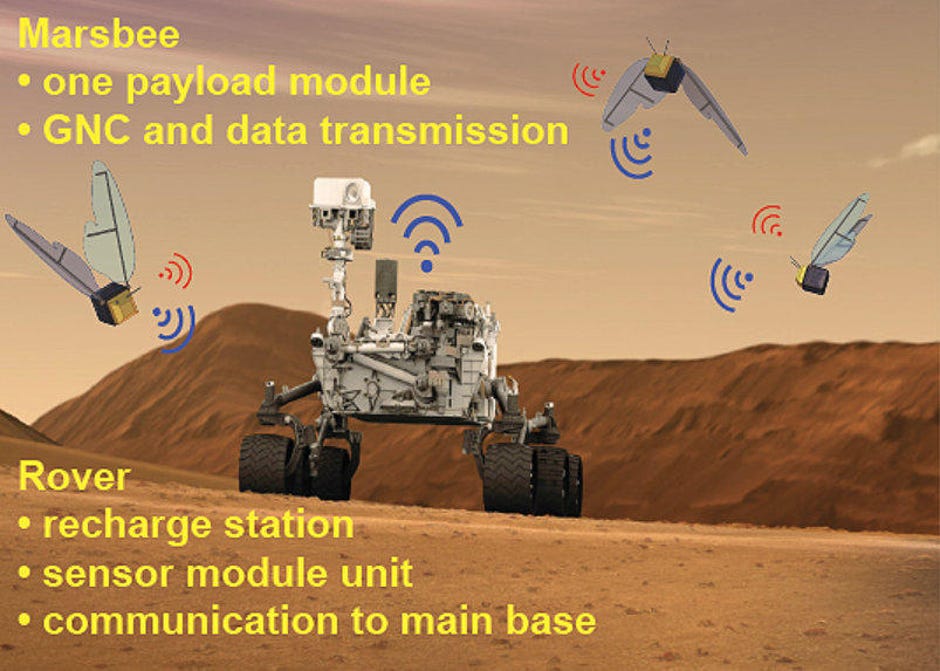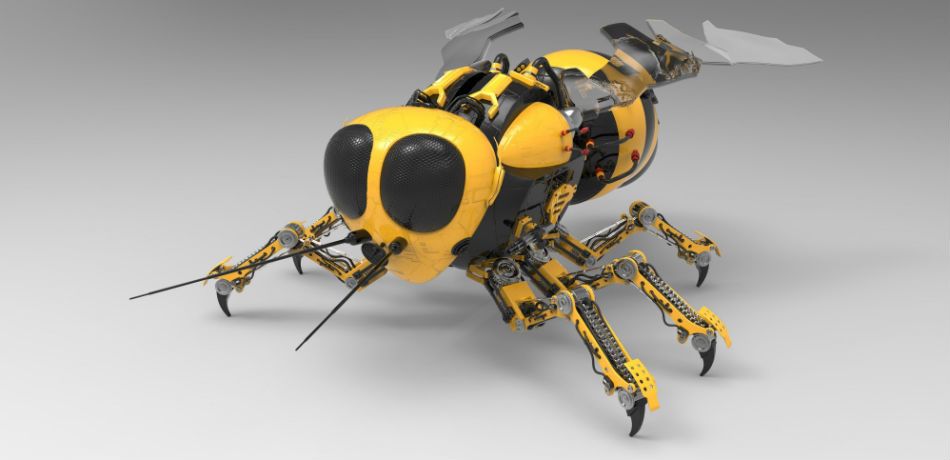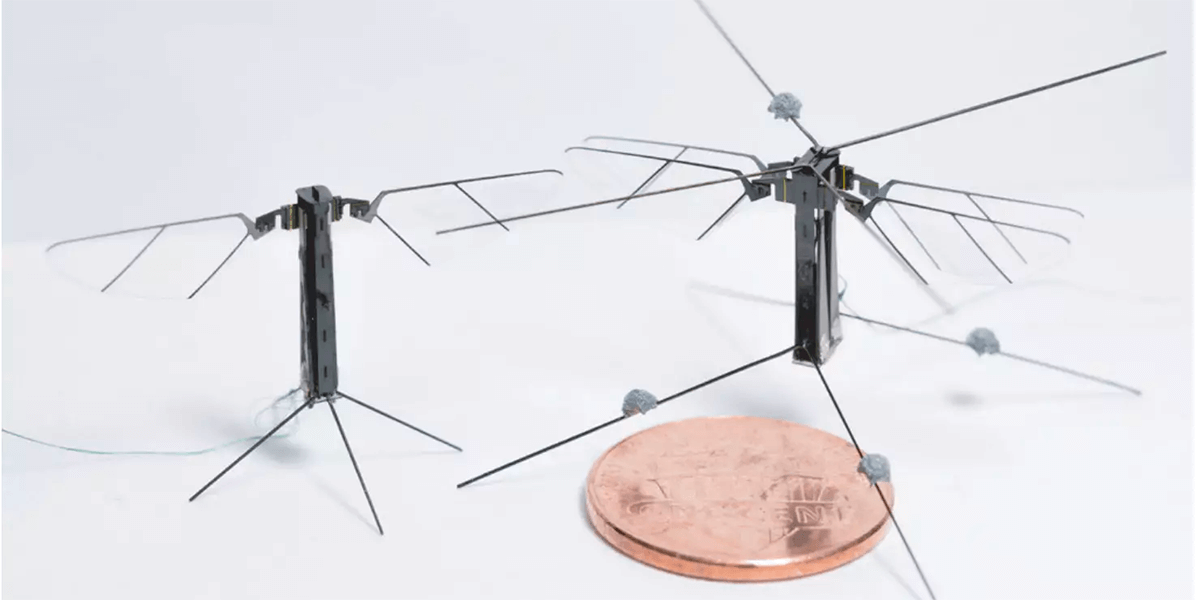Robots inspired by Insects' Brains
Humans are continually looking for inspiration around it for new ideas and nature has always been the mine of ideas for robotics and new creations. In this blog, we will meet small robots inspired from insects. Insects perform all the complex tasks from navigating through ways to communicating with minimal neural circuitry. Over a decade, scientists have learned from the insights of insects' brains and utilized that research to unlock the secrets of these simple circuits.
Here are a few robots which mimic the behavior of the insects.
1) MARSBEE


Features:
-
Architecture consists: Mars rover(serves as mobile base) & swarm of marsbees.
-
Integrated with sensors and wireless communication devices.
-
Compliant(Flexible) wings and an innovative energy harvesting mechanism makes it a low power design.
-
Small size, small volume
Abilities:
-
Facilitating reconfigurable sensor networks
-
Creation of resilient systems
-
Sample or data collection using single or collaborative Marsbees.
-
Offers more robustness to individual system failures
Inspiration:
- Cicada, Bumble bees
2) GapFlyt
Features:
-
Monocular camera and onboard sensors
-
An optical flow network that runs on Python with TensorFlow
Abilities:
-
Fly though unknown gaps without a 3D reconstruction of the scene
Developers:
-
Developers at perception and Robotics Group at University of Maryland, College Park
3) MIT Insect like robots
Collision Resilient Insect-Scale Soft-Actuated Aerial Robots With High Agility
Features:
-
More resilient tiny drone using soft actuators made up of thin rubber cylinders coated in carbon nanotubes
-
Weighs approximately 0.6 grams.
Abilities:
-
When voltage is applied to the carbon nanotubes, they produce an electrostatic force that squeezes and elongates the rubber cylinder. Repeated elongation and contraction causes the drone’s wings to beat — fast.
-
Flap nearly 500 times per second, giving the drone insect-like resilience
-
Can safely run into obstacles without greatly inhibiting flight
-
Can do aggressive maneuvers like somersaults in the air.
Developers:
-
MIT Assistant Professor Kevin Yufeng Chen , a member of the Department of Electrical Engineering and Computer Science and the Research Laboratory of Electronics
4) BEE+
Features:
- Weighs 95 milligrams
- The size of a penny.
- Fly with four wings
Abilities:
- Bee Plus can perch, land, swim, follow a path, and avoid obstacles.
Developers:
- Engineers at the University of Southern California
5) Dash
The DASH robot could be used to tackle jobs that may be too dangerous for humans like checking for explosives, examining contaminated areas, or even inspecting bridges.

Features:
- Four inches long and two inches wide.
- Hexa-pedal design.
- Interchangeable feet including claws/magnet
- Recently the robot has been given wings.
Abilities:
- It can move steadily across multiple surfaces.
- Claws allows it to climb vertically.
- Wings allow it to fly as fast as four feet per second.
Developers:
- Researchers at University of California
There are many more bio inspired robots which can perform any task from delivering the drugs inside the body to helping in construction. Explore more about them and share with me in the comments .Have a nice time :)
Sources:
Marsbee - Swarm of Flapping Wing Flyers for Enhanced Mars Exploration-NASA
GapFlyt: Active Vision Based Minimalist Structure-less Gap Detection For Quadrotor Flight
Bug Life: These 5 Robots Were Inspired by Insects - Interesting enginnering



Comments
Post a Comment